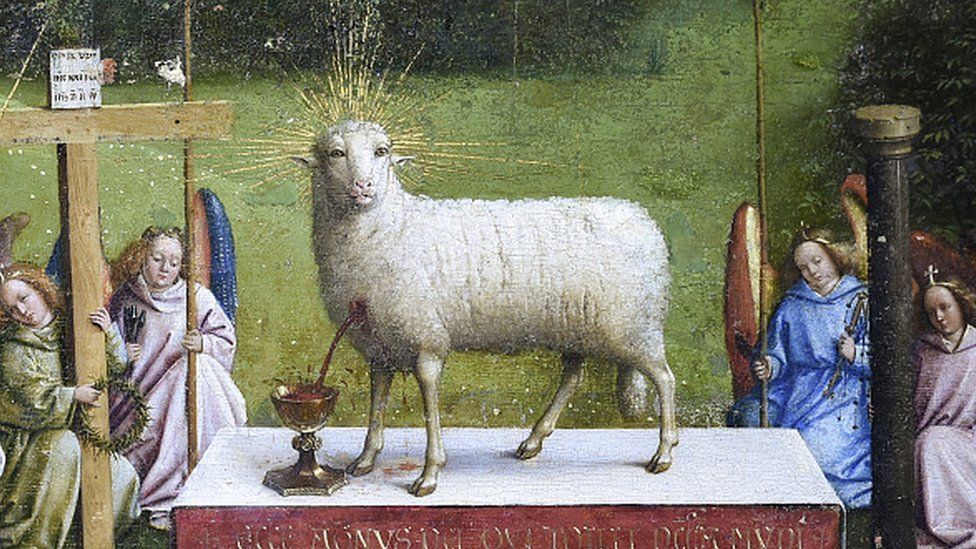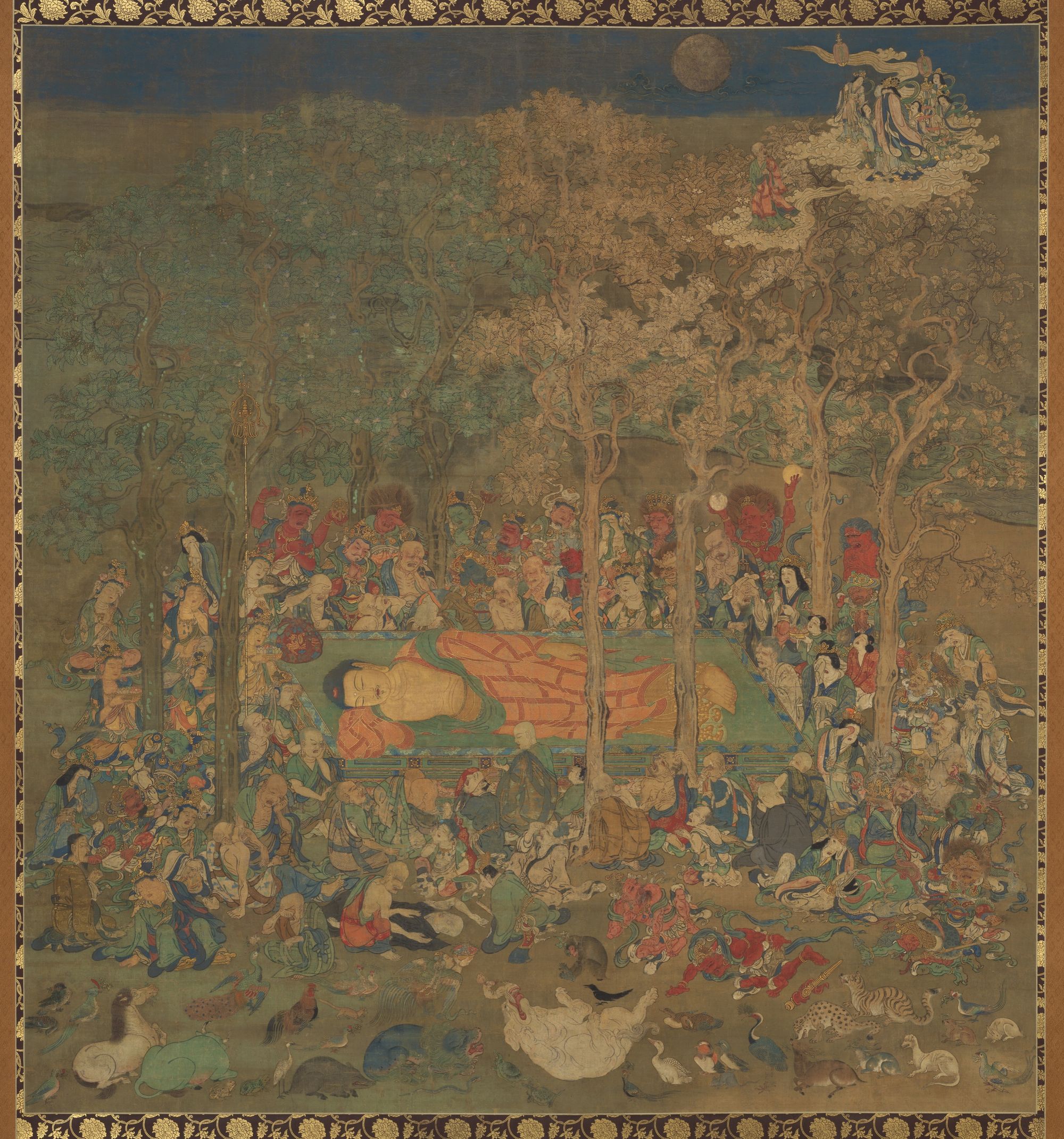Buddhist benevolence and Christian compassion
When we compare the figures of the Christian saint and the Buddhist bodhisattva, we are confronted with the contrast between compassion and benevolence. These two words cut to the heart of each religion’s subjective orientation.

In Buddhism, their saints don’t enter into salvation, but rather refuse to enjoy salvation for themselves, instead working to ensure that all beings will someday attain salvation.
These figures are called bodhisattva — beings who have stood at the threshold of enlightenment, and turned back, unwilling to enter such bliss without every other creature also joining alongside them.
Bodhisattva serve as guides for others to attain enlightenment, and in Pure Land traditions of Buddhism, bodhisattvas appear as rulers of realms which are more amenable for attaining enlightenment than our own.
When we compare the figures of the Christian saint and the Buddhist bodhisattva, we are immediately confronted with the contrast between the virtue of compassion and the virtue of benevolence.
Though close in meaning, the crucial distinction between these two words draws a dividing line which cuts to the heart of each religion’s elementary subjective orientation.
Solidarity in suffering
Compassion — “to suffer with” (syn-pathos)— stands at the heart of the ministry of Jesus who became a human being in order to take on our infirmities, ultimately suffering the pain and humiliation of the cross.
The book of Hebrews says that Christ sympathizes (same root word as suffering - pathos) with our weaknesses, and St. Paul similarly extends this imperative of compassion to the New Testament community of believers. He exhorts followers of Jesus to bear each other’s burdens, and to account their own interests as lesser than others, following the example of Jesus Christ who “emptied himself” (kenosis) out as a servant of others.
In contrast, the virtue of benevolence (bene - good, volentem - to will or wish) hardly appears in the Christian Scriptures, and has historically played little role in Christian moral reflection.
If benevolence enjoyed any parlance at all, it was primarily through the Stoics, whose philosophy was more influential for early Christian ethical reflection than Aristotle. The apatheia emphasized by the Stoics has the most connection to the Buddhist benevolence, especially as it places the accent on not being perturbed or tossed about by the illusions of the body.
Historically, benevolence has played a much greater role in Buddhist ethical discourse than in Christianity, and it positively defines the figure of the bodhisattva — one who turns back from attaining enlightenment until all other beings are similarly able to attain it as well.
Such a generous act of foregoing one’s own benefit for the benefit of others exudes a goodwill which many would acknowledge constitutes a noble act, and even bears some resemblances to Christ himself. The Bodhisattva’s benevolence consists in their universal wish for all beings to experience Enlightenment, and especially in their self-binding commitment to work towards this outcome.
The notion of suffering cuts through these two concepts in that the compassionate one suffers with, while the benevolent one wishes good for others.
The compassion which the Christian elevates in their ethics places an emphasis on solidarity in pain, entering into the plight of the other to meet them, walk with them, and share their burden.
However, it's not clear to me that benevolence requires a shifting of one's circumstances or subjective stance. One may wish well for all, but is this the same as carrying the other's burden?
The death of Christ and the death of the Buddha
Using Christ as a model, the New Testament seems to conceptualize righteousness through the lens of suffering, making the two almost inseparable.
The image of the servant or the slave crops up in this context, and this stems directly from Christ’s teaching that if he suffered so too will the Christian — “how shall the servant be any different from the master?”
St. Paul refers to himself using the double language of a “prisoner for Christ,” by which he means both that he is in prison on account of Christ, but also to radically assert the true nature and cost of his bond with Christ.
In Christianity, God even takes the marks of suffering into His body eternally, as we see in St. John’s image of “the lamb who was slain” in the book of Revelation where even at the culmination of history the risen and ruling Lamb (Jesus Christ) retains the wounds of the crucifixion in His glorious resurrected body.

We can contrast this image of “the lamb who was slain” and Paul the “prisoner for Christ” with the image of the Buddha’s peaceful repose and the Pure Land of the bodhisattva to articulate the difference between compassion and benevolence.
Just as the crucifixion of Christ has found representation in countless Western pieces of art, so too the death of the Buddha pervades the imagery of the East.
The contrast between the two is striking.
In death, the Buddha is portrayed as lying down, almost sleeping, entering into a peaceful final repose. In the photo below, animals, humans, and gods all gather to mourn, and yet the Buddha closes his eyes peacefully, unperturbed by the chaos around him.

We see strikingly similar depictions of bodhisattvas, such as the Amidha Buddha in the Pure Land tradition, who turned away from enlightenment, binding himself with a series of vows about how he would ensure the enlightenment of all beings.
Through the practice of nembutsu, Pure Land (Jodo Shinshu) practitioners entreat the Amidha Buddha to re-incarnate them into his Pure Land upon their death. In the Amidha's Pure Land, where all the suffering which would serve as obstacles to enlightenment has been functionally eliminated, even the weakest of practitioners can attain enlightenment with ease.

Benevolence and the clinical stance
I see in the benevolence of the Buddha and the boddhisatva the distance of the clinician. Whereas compassion functions as an active virtue which partners with the practitioner, benevolence inculcates a passivity which dispenses aid while leaving the practitioner fundamentally alone in their attainment of salvation.
In this image of the bodhisattva, we begin to glimpse a pre-figuration of the clinical approach of the doctor or physician — it’s precisely the doctor’s state of dis-attachment which enables them to apply their elevated consciousness in service of resolving and relieving the patient’s suffering.
Through the clinical application of techniques, the doctor and the bodhisattva do not deliver salvation directly, but ultimately serve to make its attainment possible for the individual patient by way of dispensing aid and eliminating suffering.
Unlike the compassion displayed by Christ, the bodhisattva’s benevolent work does not consist in entering into a solidarity with the sufferer in their situation in order to make something new appear. Instead, the bodhisattva transmigrates the sufferer from their situation into a new one, but without any change in the bodhisattva's condition.
The benevolence of the bodhisattva thus does not directly provide salvation itself, but consists rather in making salvation as easy and simple as possible for the practitioner. Getting to the Pure Land is neither the final goal nor the attainment of salvation itself, but instead serves as a place so designed that the attainment of salvation may be functionally guaranteed. The bodhisattva cannot ‘give’ enlightenment to the devotee (nor can anyone else).
Contrast this with the compassionate work of God in Christ, where God gives not only salvation, but makes possible every step of the process -- from the subjective ability to know God, to the heart's acceptance of salvation, to the very blessings of salvation itself – God provides it all, but He does so through an engagement (and even struggle!) with the one in need of salvation.
Compassion closes the gap between the self and the other, drawing near and engaging in proximity in order to build bonds of mutual care and support with the other. Compassion is driven towards the other by love, and thus, in important respects, makes the compassionate one feel “out of control.” Compassion has an inexorable and irresistible quality to it, almost as if this love has an inherently pathological element to its operation.
What truly marks compassion from benevolence then is the change which takes place in the compassionate one – the demand and compulsion of love transforms also the one who exercises compassion even as it partners with the one who has become the object of compassion.
Both having been changed, they enter a new world together.
